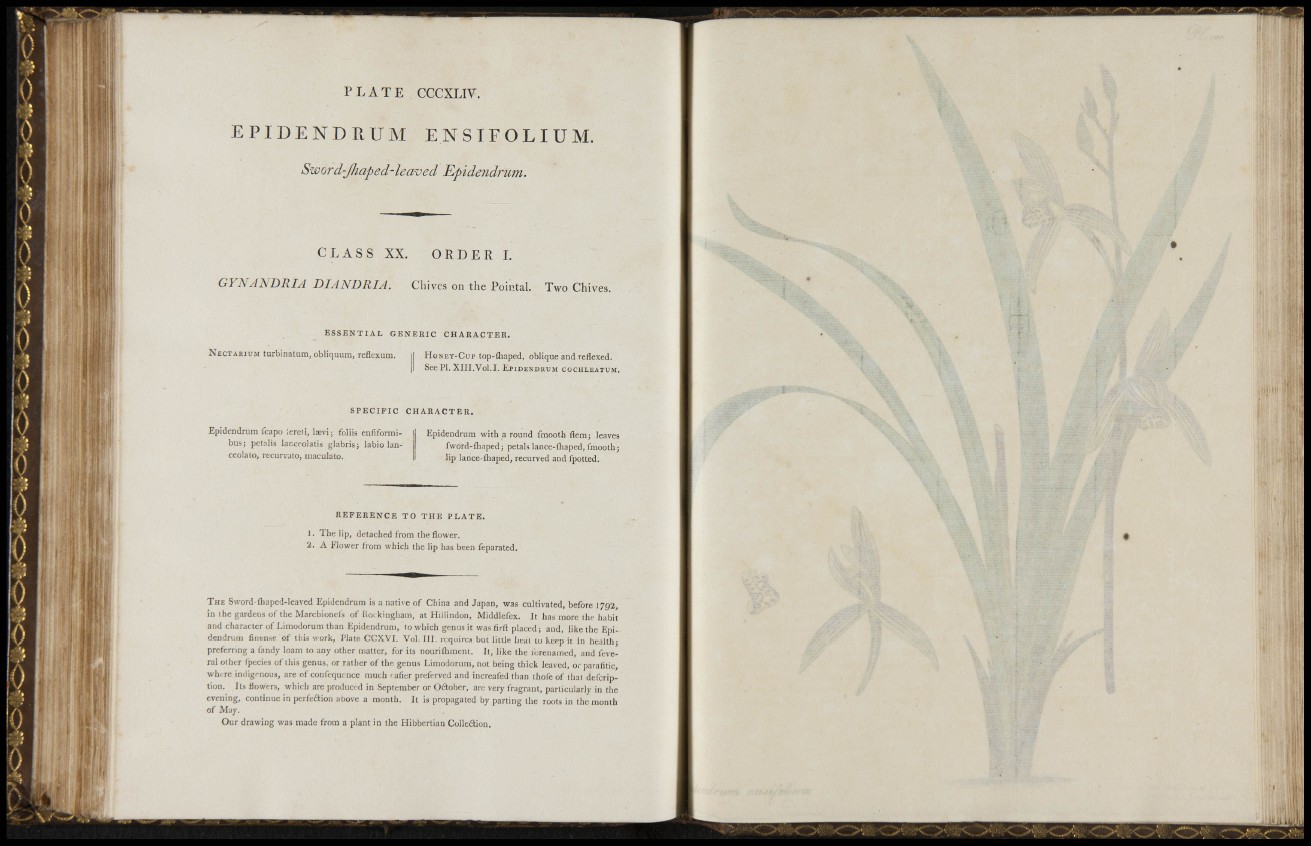
P L A T E CCCXLIV.
E P I D E N D R U M ENSTFOLIUM.
Sword'Jiiaped-leaved Epidendrmn.
C L A S S XX. ORDER L
GYNANDRIA DIANDRIA. Chives on the Pointal. Two Chives.
ESSENTIAL GENERIC CHARACTER.
NECTARIUM turbinatum, obliquum, reflexum. HONEY-CUP top-(haped, oblique and reflexed.
S e e PI. X I I I . V o l . I . EP I D E N D K U M COCHLEATUM.
SPECIFIC CHARACTER.
Epidendriim fcapo lereli, laevi; foliis enfiformibus;
petalis lar.ceolatis glabris; labio lanceolato,
recurvato, maculato.
Epidendrura with a round fmooth ftem; leaves
fword-flinped; petals lance-fliaped, fmooth;
lip lance-ihaped, recurved and fpotted.
REFERENCE TO THE PLATE.
1. The lip, detached from the flower.
2. A Flower from which the lip has been feparated.
THE Sword ihaped-Ieaved Epidendrum is a native of China and Japan, was cultivated, before J 792,
in the gardens of the Marchionels of Kotkingham, at Hillindon, iVIiddlefex. It has more the habit
and character of Limodorum than Epidendrum, to which genus it was firft placcd; and, like the Epidendrum
linense of tliis work, Plate CCXVI. Vol, III. requires but little heat to keep it iu liealth;
preferring a fandy loam to any other matter, for its nouriiliment. It, like the foreiiained, and feveral
other fpecies of this genus, or rather of the genus Limodorum, not being thick leaved, or paralitic,
whrre indigenous, are of confequc-nce much -alier preferved and increafed than thofe of thai defcription.
Its flowers, which are produced in September or Oftober, are very fragrant, particularly in the
evening, continue in perfeaion above a month. Jt is propagated by parting the roots in the month
of May.
Our drawing was made from a plant in the Plibbertian Colleftion.